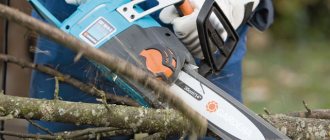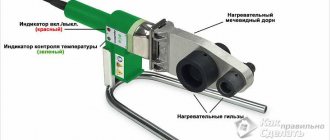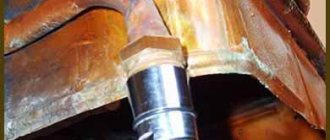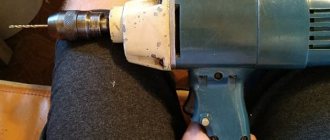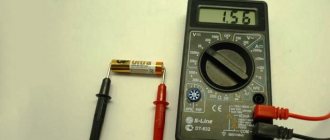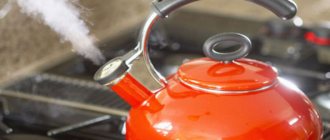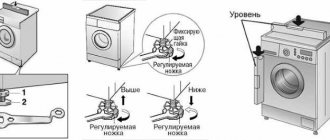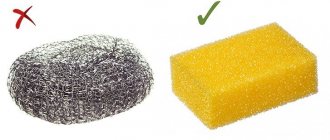Electrodes in our time do not belong to the category of scarce goods. In any hardware store, we can buy electrodes of any diameter and any purpose. Every craftsman always has some kind of supply of electrodes at home: three, four, etc.
Advertisement
But! Agree, there are times when, in the midst of work, the electrodes unexpectedly run out. Unpleasant. I didn’t think, I didn’t calculate, I didn’t stock up. It’s good if your neighbor is also a welder and can help out with a dozen other electrodes.
What if there is nowhere to get it? And the work needs to be finished!
This is what we’ll actually talk about.
I’ll say right away: I have two recipes for you. One of them is a miner's
The first recipe. How to make a welding electrode
This technology requires a lot of time and some materials (which, like normal electrodes, you may not have). Therefore, although this method exists, in my opinion... while you make these homemade electrodes... you can get hold of factory ones.
Nevertheless... In case you find it useful:
To make electrodes according to the first recipe, you will need:
- steel wire of the appropriate diameter (2, 3, 4, 5 or 6 mm.)
- liquid glass
- chalk or... paper
Mix 2 parts liquid glass with one part chalk. Dip the wire into a bath of this solution, leaving 3 centimeters of the surface uncovered (for fastening in the holder). Remove from the bath and hang on a wire to dry.
After a few minutes, when the solution begins to dry out a little, additionally “roll” your electrode in chalk.
Complete drying time is about 20-30 minutes. After this, you need to calcinate the electrode in an oven at a temperature of 110 degrees.
As you probably already guessed, you shouldn’t count on high technological performance from such a homemade product. You cannot make a high-quality seam with such an electrode. But if you are satisfied with working with tacks, this electrode is what you need!
Instead of chalk, you can use... paper! Soak ordinary newspaper in liquid glass and... wrap it around the wire in 5-6 layers. This option is considered more successful than the previous one. It is assumed that when the paper burns near the arc, the carbon dioxide released from the combustion will protect the molten bath from oxygen.
Is it possible to make a welding electrode with your own hands?
Many people ask whether it is possible to make an electrode for welding ferrous metals with your own hands at home?
The answer is no. You cannot make a normal welding electrode yourself. Because this is a fairly knowledge-intensive process, and the components included in the coating cannot always be purchased at the nearest store.
What does the great and terrible Internet offer us in this regard?
Numerous welding websites claim that making an electrode is not a problem. Without going into the details of such production, you will need a steel bar, chalk, crushed to a powdery state (fine fractions). Liquid glass (silicate glue) is applied to the rod, then the whole thing is sprinkled with chalk and rolled so that it evenly adheres to the surface of the rod. The result is a chalky layer of some thickness. The homemade product is sent to the oven, oven or dried with a hairdryer.
And can you cook with this?
From our point of view it is impossible. You can equally well weld with a nail, rebar or bare metal rod. No difference. The process of such welding is unstable, the seam can hardly be called such, and there will be practically no slag due to the absence of slag-forming elements in the composition of the coating.
If you are going to do it yourself, it is better to use the idea proposed a hundred years ago by two Americans. They came up with the idea of simply wrapping the rod in paper and gluing it onto liquid glass. At least it's easier than messing around with chalk. And the idea is very simple. The paper burns and emits smoke, which protects against the harmful effects of oxygen. Also, such a coating somehow improved ignition and had a positive effect on the stability of the arc... And this, of course, is very doubtful. Since the easy ignition of an electric arc and the maintenance of its combustion occurs due to the low ionization energy of elements such as sodium, potassium and calcium.
In other words, you don’t have to worry about the composition of the coating and the method of application. If you really want to cook, but have nothing to cook with, and the shops are all closed for the holidays, take any piece of iron of suitable diameter and length, clamp it into the electrode holder and cook - this process cannot be called welding, but it is quite possible to grab something this way in extreme conditions. At the very least, this is no worse than the options proposed above.
The coatings of modern electrodes use gas-forming, alloying, slag-forming and stabilizing components. They provide the comfort and quality of welding available to modern welders. The coating may contain marble, rutile, fluorspar, ferro-manganese, kaolin and more. Liquid glass is used as a binder, and nothing has changed here. The quality of the electrodes is also affected by the pressure of the electrode press. Read the article on this topic “How welding electrodes are made.”
The second recipe. Shakhtyorsky. How to make an electrode.
This recipe is taken from a miner's environment. This is where there really is, in case of unexpected work, there is no place to get electrodes!!!
Miner's ingenuity sometimes gives birth to such technological solutions that you are amazed!
So... Take a wire of the required diameter and simply coat it... with ordinary clay! That's all! They don't even dry it. They work right away.
But there is one caveat. To weld with this electrode, direct current is required. I won’t tell you where they get direct current in the mine. Because this technology is associated with a gross violation of safety regulations. If there are miners among my readers, they will guess what I’m talking about.
Although, I’ll give you an outline. She is in this photo:
If you only need to cut metal, then use a conventional AC machine. This electrode is most often used for cutting. If you don’t have a factory one at hand, but the work needs to be done.
Like this!
How to weld aluminum with electrodes at home
Every welder knows that welding without electrodes is impossible, and without high-quality electrodes, high-quality welding is impossible, so it is necessary to purchase high-quality welding electrodes in order to weld at the highest level. However, situations arise when it is not possible to purchase welding electrodes, but there are many available tools. Is it possible to do without a welding electrode manufacturer? Let's find out about it from this article.Electrodes are not that difficult to make. For manufacturing, it is necessary to select a welding wire of a suitable diameter to create a welding electrode. After selecting the wire, it must be cut into pieces of 350 millimeters and sanded. After this, it is necessary to prepare a coating, which consists of liquid glass (silicate glue) and crushed chalk.
To ensure that the coating is even. It is necessary to immerse the electrode wire vertically into the coating and leave a clean end 30 - 35 millimeters long under the top. After this, the electrode should be slowly removed and hung on a rope to dry. After complete drying and hardening, you receive fully working welding electrodes.
When welding is done at home, a satisfactory result is obtained using the contact aluminum welding method. This type of welding is carried out with continuous reflow on electrically conductive machines. It is also possible to carry out seam welding of aluminum, but this requires a high-power machine with special ion interrupters. These methods can be difficult to use at home, but some welders still use them.
When welding at home, you should not forget that you must follow safety precautions and strictly follow all requirements. The first thing you need to pay attention to is the insulation of all wires that take part in the welding process and are energized.
When carrying out welding work at home, you need to use gloves or mittens that will protect your hands from burns. Rubber boots will protect you from electric shock. When carrying out welding work, you must wear a special mask to protect your face from sparks, embers and burns. In no case should you store flammable and flammable materials and objects in the room in which you are going to carry out welding work.
If the room has a wooden floor, it should be protected from fire using a metal sheet. You should definitely place a fire extinguisher or a bucket of water near the place where you are going to weld. Due to the possible formation of harmful gases or other compounds hazardous to health, it is necessary to regularly ventilate the room in which you are welding.
Welding automotive metals Selecting current when welding aluminum
How to weld aluminum with an electrode
Aluminum electrodes for welding are metal rods coated with coating. The coating protects the metal from oxidation and improves the quality of the weld.
They are practically not used in large workshops and factories, since their efficiency is not enough to perform large volumes of work.
But such electrodes are widely used by home craftsmen.
A carbon electrode is often used to weld aluminum. In this article we will tell you everything you need to know about aluminum rods and explain in detail how to make your own welding electrodes.
How to weld aluminum: description of electrode welding technology
Currently, aluminum is used in a wide variety of fields.
This thin and flexible material is often found in vehicle parts, including engine blocks, transmissions and body parts.
It is also used to create stainless steel containers for household and industrial needs and many other important everyday items.
If a crack or problematic hole forms in such a structure, it is better to close it using a special apparatus in an argon environment.
However, not every average person has such a unit at their disposal, so they have to look for more affordable solutions.
One of them is aluminum electrode welding .
To successfully carry out such an activity, it is necessary to acquire a certain set of skills and purchase the appropriate equipment and supplies. The principle and technology of such welding are quite simple, so with the right approach you can learn them in a short time.
Features of working with aluminum
Electric arcs are used to connect many types of iron.
This technique ensures a sufficiently high combustion temperature, resulting in high-quality penetration of plates of different thicknesses, creating reliable and hermetically sealed protection. However, welding aluminum using an inverter is considered the most difficult due to certain specific characteristics.
The first difficulty lies in the hygroscopic properties of the material, which can accumulate ambient moisture.
And although this cannot be noticed in a naturally cooled state, problems will certainly arise when welding begins.
When the arc is ignited and the metal is heated to elevated temperatures, moisture particles begin to evaporate from the surface and inevitably penetrate into the welding zone.
The result is excessive spatter and interference that prevents a normal seam.
To prevent this phenomenon, it is enough to preheat the structure at a temperature of 150−190 degrees Celsius. In this case, you can notice intense release of moisture on the surface .
The next difficulty is the presence of an oxide film that covers all products. Its purpose is to protect the structure from the aggressive effects of an acidic environment.
However, this makes processing with an inverter significantly more difficult. The main problem is associated with the large difference in melting temperatures.
It is known that aluminum itself begins to melt at 500 degrees Celsius, and its oxide at 2000 degrees.
To eliminate such a difference, it is enough to clean the welding site with an iron brush to ensure the required access to the metal .
Interaction with the environment ensures the correct formation of pores in the joint structure, which significantly worsens the tightness. To protect the weld pool, argon or a gas cloud is used during inverter welding.
It is no secret that pure aluminum is practically not used for the manufacture of parts, so the fillers and additional elements included in its composition can become a problem.
For example, grades Al2 and Al2 contain silumin from 4 to 13%, so they are usually called limitedly weldable.
Similar indicators are typical for models AM r 1 and Amr 6, where manganese is added in a proportion of 2−6%.
Stages of welding activities
Understanding the key intricacies of aluminum welding is not as difficult as it might seem at first glance.
Source: https://steelfactoryrus.com/kak-svarit-alyuminiy-elektrodom/
Rods grade ok
These electrodes are manufactured by esab and the ok marking is a special feature of them. we recommend using models 96.10, 96.20 and 96.50. Yes, they are not universal, but with their help you can weld technical aluminum or manganese-based aluminum alloys. These aluminum electrodes for welding at home have shown themselves to be on the positive side, but keep in mind that they require special care and strict adherence to the expiration date.
Heat or dry - what's the difference?
The calcination and drying procedures are similar in almost all respects. However, there are some minor differences. Calcination is carried out strictly according to the instructions presented on the packaging (as in the photo above).
The main purpose of drying is to remove moisture. Therefore, for this procedure it is not so important to strictly and seriously follow the recommendations. For your information! Many professional welders simply hold the electrodes on the radiator and this replaces calcination.
This is if you cook, for example, a bench or a gate. But when ships or pipelines are welded under pressure, then it is important to follow the technology. Thus, in some cases, “folk” remedies can be used to carry out heat treatment. But to do this, you need to have information on how to dry electrodes at home. Information should be obtained from reliable sources and rely only on the opinions of experts. Basic explanations on how to dry electrodes at home are given below.

